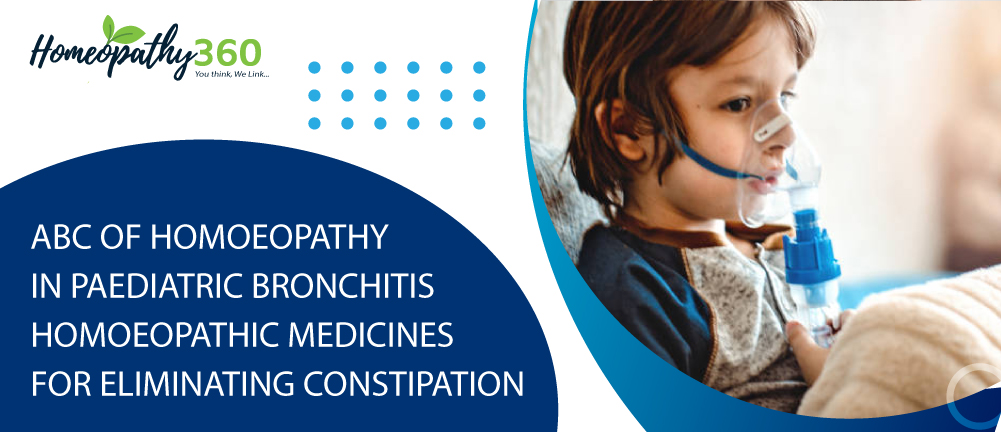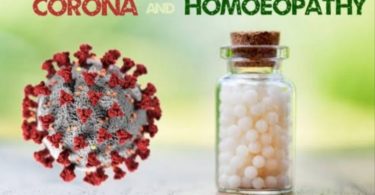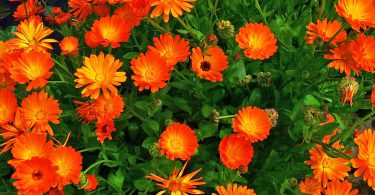
Abstract-
Respiratory tract disease is the major cause of mortality and morbidity in paediatric age group. Infections of the respiratory system are the most common reason for children presenting at the doctor’s practise. The main paediatric respiratory tract diseases, in terms of incidence include asthma, bronchiolitis, acute bronchitis and respiratory infections. Conventional medications have a small role in treating and preventing those diseases and an effective method of medications for this is needed. In this regard homeopathy can be a proper consideration.
Keywords- Breathlessness, Broncho-pneumonia, conventional, Cough, Cyanosis, Febrile convulsions, Infection, Inflammation.
Abbreviations-
BBCR- Boger Boenninghausen’s Characteristics and Repertory, CCF – congestive cardiac failure, URTI – upper respiratory tract infection.
Introduction-
The term ‘bronchitis’ denotes inflammation of the bronchi and is very commonly found in infants and young children during winters. The cold air outside and the dry heated air indoors, increase the vulnerability of the mucosa for pathogens [1]. The wonderful homoeopathic remedies can give complete rapid recovery from bronchitis; the sufferer gets very effective changes in bronchial inflammation, not only equal but also more than that of conventional treatment which may be proved by laboratory diagnosis as well.
Bronchitis is of two types-
- Acute bronchitis.
- Chronic bronchitis.
- An acute attack of bronchitis may last for a week or two.
- Chronic bronchitis relapses every winter with an acute attack with summer interval getting shorter gradually31 and the bronchitis persisting throughout the year.
- Aetiology [2]–
- Continued irritation of bronchial mucosa by dust, smoke, or atmospheric pollution.
- Exposure to cold, damp weather or sudden changes in temperature.
- Passive inhalation of cigarette smokers.
- Infection anywhere in the body may become an aggravating factor.
- Symptoms [2]–
- Common cold and cough descending to the larynx and bronchi. Cough initially dry and raw and later becoming loose.
- Expectoration scanty and tenacious in early stage, later copious and mucoid. Occasionally streaked with blood.
- Breathlessness caused by airflow obstruction because of mucus or spasm of tubes.
- Sometimes, cyanosis and respiratory distress.
- Fever.
- On examination: breath sounds become harsh and high-pitched.
- On auscultation: localised dry rales and wheezing.
- Complications [3]–
Bronchitis may further progress to following conditions:
- Broncho-pneumonia or lobar pneumonia.
- Bronchiectasis.
- Active tuberculosis.
- Increased cardiac strain leading to CCF.
- Clinical enquiry-
- History:
- Importance to be given to spontaneously observations reported by mother.
- Detailed day wise evolution of complaints.
- Ailments from change of weather, draft, food, family history of URTI, modalities and response to previous treatment [4].
- Concomitants, for example:
- Irritability, dullness, drowsiness, restlessness, weakness, mental symptoms.
- Thirst, appetite, sleep pattern and reason for disturbance of sleep, inability to suck milk in infants.
- Any history of febrile convulsions.
- Family illnesses.
- Physical examination:
Look, alae nasi, moaning/grunting, cyanosis, temperature/ respiratory rales, chest examination, per abdomen examination.
- Investigations:
- Complete blood count.
- Chest X- ray.
- Management:
- Mild and moderate bronchitis can be managed at home.
- In severe bronchitis where respiratory distress is severe, hospitalisation is required as observation and auxiliary measures are necessary.
Homoeopathic management
Homoeopathic management by homoeopathic remedies helps to keep inflammatory process reduced at a minimum level and thereby preserving respiratory organs and preventing respiratory diseases. Constitutional, concomitant and associated symptoms are also managed. Homoeopathy is the science who deals with patient symptomatology. Homoeopaths stress on the individualistic approach of treatment to cure the patient. In homoeopathy, one puts a lot of stress on mental general and physical general symptoms. Every disease affects the mental sphere of the patient and if the patient is mentally fit, his suffering is gradually diminished. So, whenever we treat such types of cases, one also emphasises on the mental sphere of the patient which helps to choose the simillimum.
Homoeopathic remedies and their indications-
Some of the well-known homoeopathic medicines which have been used for the treatment of bronchitis as discussed in different materia medica books are as follows:
- In acute bronchitis:
- Aconitum napellus:
It should be given in the first stage when the fever is high and has been preceded by a chill due to exposure to cold draughts [5]. Expectoration is watery, blood streaked. Unnecessary anxiety and great restlessness.
- Bryonia alba:
Dry, hacking cough, esp. at night, must sit up aggravate after eating or drinking. Very painful cough with fever and great thirst for large quantity of water at long intervals [6]. Patient wants to lie down quietly and does not want to be disturbed.
- Antimonium tartaricum:
Cough with loud wheezing [7]. Mucus rales all over the chest with violent paroxysm of coughing. Loose rattling cough, suffocative shortness of breath, laboured breathing, abdominal breathing. Cough followed by vomiting. There is more prostration with cold sweat.
- Hyoscyamus niger: Dry, spasmodic cough at night, aggravates on lying down, greatly relieved by sitting up and bending forwards. Cough frequently spasmodic, in short rapid paroxysms, almost like whooping cough.
- Ipecacuanha:
Cough incessant, violent, with every breath. Suffocative cough. Cough with wheezing, followed by vomiting. Fever with thirst. During fever, extremities become cold, while head and abdomen remain hot.
- Hepar sulphuricum:
It is indicated when the cough begins to loosen with rattling, fatigue and choking. Coughing excited whenever any part of the body gets cold or uncovered [8]. Coughing with choking sensation is a very important indication for this remedy. Child weeps before, during or after coughing.
- Rumex crispus:
Cough with tickling in the throat pit, which is worse by cold air, change of temperature of air, talking and eating. Barking cough, cough comes regularly at 11 pm, 2 am and 5 am [9].
- Tuberculinum bovinum:
It is very important remedy which should be given at the commencement of treatment or when the above remedies fail to arrest or cure the disease.
- In chronic bronchitis:
- Ammonium carbonicum:
Chronic bronchitis with copious accumulation of mucus in the lungs, the patient coughs every morning at 3 am and dyspnoea [10], much heaviness in the chest with burning. The patient is weak and sluggish in his movements.
- Bacillinum:
It is very important remedy for persons suffering from chronic, suffocative catarrh with muco-purulent expectoration [11].
- Kali Bichromium:
The cough is hard, barking character almost always aggravated after eating and ameliorates when warmly wrapped up in bed, with a great difficulty in breathing. The expectoration is tough, stringy and tenacious [12]. The mucus is very difficult to dislodge and often causes the child to cough till he vomits.
- Kalium carbonicum: It is indicated in bronchitis, when there is sharp, stitching pains, which are prominently located in the walls of the chest [13], dry coughing at 3 am. Expectoration is salty, scanty, and tenacious. Breathing difficult on least motion or walking. Better by bending forward or when sitting up.
- Arsenicum album:
In chronic cases, with labourious breathing, great exhaustion and restlessness. Cough usually after midnight, on lying down, especially on back. Expectoration scanty, frothy. Wheezing respiration. Thirst for small quantity of water at short intervals. There is thin acrid discharge from eyes and nose [14].
- Phosphorus:
It is indicated for rales throughout chest. Cough from tickling in throat, aggravates from cold air, reading, laughing and talking, ongoing from warm room into cold air. The sputum consisting of yellowish mucus with streaks of blood running through it, is the characteristic [15], although it may be bloody and full of mucus, or purulent having sweetish or salty taste.
Repertorial analysis-
Some well -known repertories and their rubrics with medicines for bronchitis are discussed below:
- Kent Repertory[16]
Inflammation-bronchial tubes (bronchitis) – children: Dulc. Ip. Kali-c.
- Boericke Repertory [17]
Irritation of tubes: Acet. ac.; Acon.; Alumen; Ambros.; Brom.; Bry.; Chlorum; Ferr. P.; Hep; Phos.; Piloc.; Rumex; Sang. N.; Spong.
- BBCR [18]
Chest- Inner- Bronchiae- bronchitis: Aco, ant-t., arn, ARS, bar-c., Bell, BRY, calc.c, Chin, cina, con, Dro, Dul, euphr, fer, Hep, Hyo, ign, ip, kali-bi, lach, lyc, mag-c, mang, Merc, nat-c, nat-m, Nux-v, Petro, Pho, pho-ac, PUL, RHUS-T, saba, scil, sep, sil, Spi, Spo, Stan, Stap, stran, SUL, ver-a, Verb.
- Clinical Repertory[19]
Bronchitis: Aco, All, Alo, Aln, Amc, Am-c, Am-m, Ant-i, Ant- t, Arn, Ars, As-i, Asc-s, Asc-t, Avi, Bal, Bl-o, Bry, Cac, Cb-v, Crd-m, Caus, Chl-h, Cin, con, Cop, Drs, Erio, Eth, EUC, Fe-P, Gnd, Gui, Hep, Hpt, Hpz, Hyo, Ibe, Ipc, Jab, K-bi, K-ca, Ln-c, Mr-sol, Nph, Nt-x, Osm, Phel, Ph-x, , Pho, Pin-s, Pix, Pod, Pmo, Pul, Rum, Sbl, Sng, Sgn, Seil, Sga, Slp, Stn, Sti, Sul, Ter, Tub, Ver.
Conclusion and siscussion-
Bronchitis is a common illness of paediatric age group, often associated with pain. Child’s age and failure to understand their complaints are the contributory factor in the development of chronic bronchitis. Homoeopathic way of management is truly a holistic approach to deal with bronchitis and pain in rapid, gentle, permanent, most reliable and harmless way. Homoeopathy plays a vital role in bronchitis. In homoeopathy, in order to cure the patient, it is necessary to go back in history and get those symptoms that represent the patient in a state of disease and not the tissues in a state of disease. Therefore, homoeopathy is a good choice of treatment in cases of paediatric bronchitis.
References-
- Irusen E.; Lung diseases: selected state of the art reviews. Copyright edition. Croatia; In tech; Janeza. 2012. P; 443.
- Davidson S.; Davidson’s principles and practice of medicine; 23rd edition. Edinburgh; Elsevier Ltd. 2018. P; 343, 388.
- Price F. W.; A text book of the practice of medicine; 12th edition. Oxford; Oxford university press. 1946. P;1196
- Kent J.T.; Repertory of the homoeopathic materia medica; reprint edition. New Delhi; B. Jain publishers (P) Ltd. 2002. P; 836.
- Chandgiram; Homoeopathic care of mother and child; 1st edition. New Delhi; B. Jain publishers (P) Ltd. 1998. P; 78.
- Patil J.D.; Gems of homoeopathic materia medica; 1st edition. New Delhi; B. Jain publishers (P) Ltd. 1999. P; 164.
- Lilienthal S.; Homoeopathic therapeutics; 2nd edition. Philadelphia; Boericke and Tafel Publications. 1879. P; 163.
- Boericke W.; Pocket manual of homoeopathic materia medica; 9th revised edition. New Delhi; Motilal Banarsi Das publishers (P) Ltd. 1993. P; 327.
- Pathak S.R.; Materia Medica of homoeopathic medicines; reprint edition. New Delhi; B. Jain publishers (P) Ltd. 2002. P; 607.
- Allen T.F.; Handbook of materia medica and homoeopathic therapeutics; reprint edition. New Delhi; B. Jain publishers (P) Ltd. 2005. P; 61.
- Jain B; Practice of medicine paper-1(solved papers); 1st edition. New Delhi; B. Jain publishers (P) Ltd. 2002. P; 100.
- Pierce W.I.; Plain Talks on materia medica; reprint edition. New Delhi; B. Jain publishers (P) Ltd. 2005. P; 531.
- Farrington E. A.; Therapeutic pointers to some common diseases; reprint edition. New Delhi; B. Jain publishers (P) Ltd. 2004. P; 8.
- Santwani M.T.; Common ailments of children and their homoeopathic management; Reprint edition. New Delhi; B. Jain publishers (P) Ltd. 2000. P; 105
- Farrington E.A.; A clinical Materia medica: 1st edition. Philadelphia; Boericke and Tafel publications.1908. P; 571.
- Kent J.T.; Repertory of the Homoeopathic Materia medica; reprint edition. New Delhi; B. Jain publishers (P) Ltd. 2006. P; 835.
- Boericke W.; Pocket manual of Homoeopathic Materia Medica and Repertory; reprint edition. New Delhi; B. Jain publishers (P) Ltd. 2003. P; 885.
- Boger C.M.; Boger Boenninghausen’s characteristics and Repertory; 42nd impression. New Delhi; B. Jain publishers (P) Ltd. 2016. P; 755.
- Clarke J.H.; A clinical repertory; reprint edition. New Delhi; Indian books and periodicals publishers. 2008. P; 44.
About Author:
Dr Deepti Sharma
BHMS, MD.
Asst. Proff. Dept. of Physiology and Biochemistry
DEI, Faculty of Integrated Medicine (AYUSH)
Dayalbagh, Agra





